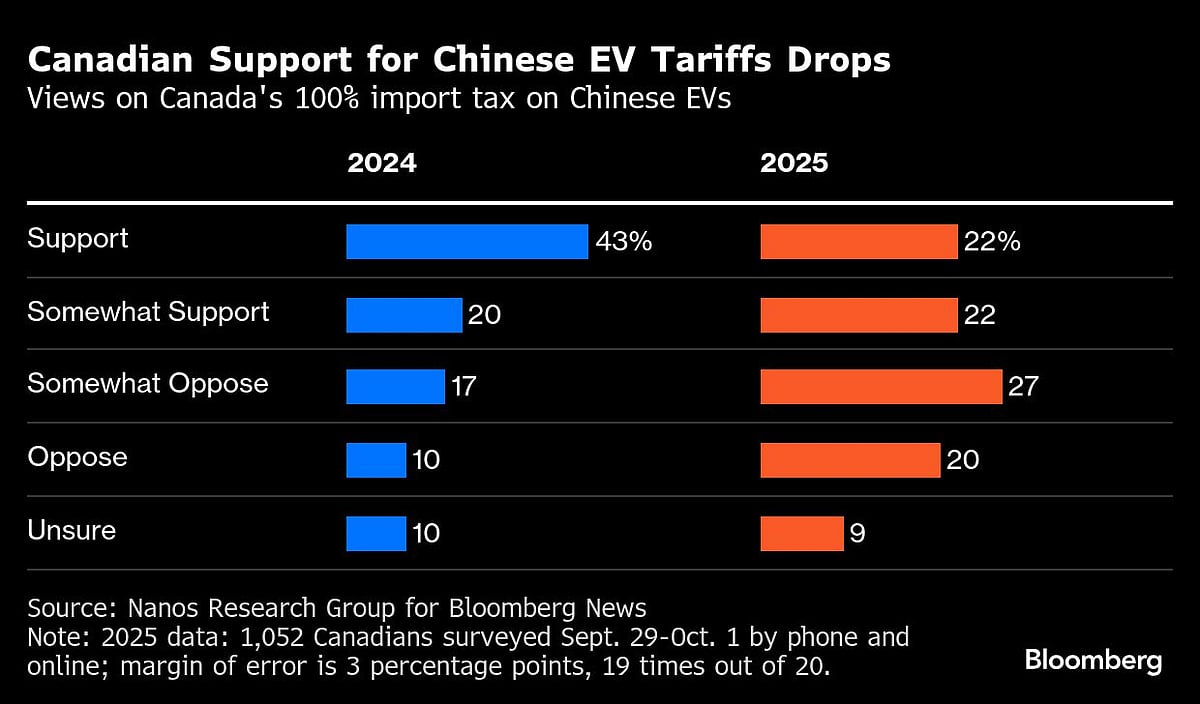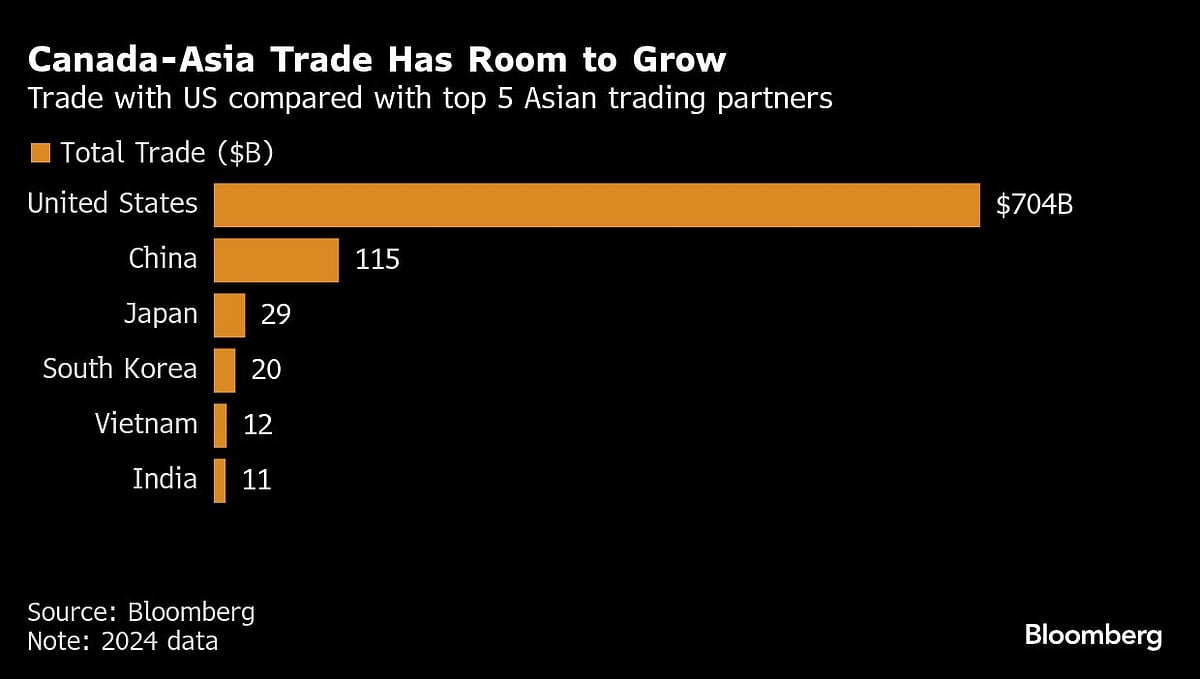Canada Seeks To Ease China, India Tensions As Trump Digs In
Canada’s disputes with Asia’s two most populous countries are serious, and any steps to ease tensions with China will need to be taken carefully to avoid triggering a reprisal from Trump.

Canada is pushing to strengthen ties with China and India, even as it remains in precarious trade talks with a US administration that has escalated its tariff war with Beijing.
Foreign Minister Anita Anand is traveling to New Delhi, Mumbai, Singapore and Hangzhou, China this week to meet with her counterparts and lay the groundwork for boosting trade and investment.
Her task is hard and extremely delicate: Canada’s disputes with Asia’s two most populous countries are serious, and any steps to ease tensions with China will need to be taken carefully to avoid triggering a reprisal from US President Donald Trump.
But Anand argues Canada is taking the same approach with every country — putting the interests of its workers and businesses first. It’s a clear shift under Prime Minister Mark Carney, who has prioritized the economy above all else, scrapping many of the tenets of Justin Trudeau’s foreign policy.
“It goes back to being a sovereign country,” Anand said in an interview with Bloomberg News, when asked how Canada can balance its relationships with China and the US.
Trump threatened an additional 100% tariff on Chinese products on Friday, causing equitie markets to dive, though on Sunday the president signaled openness to a truce.

“Having a stable relationship with a major global economic player is of exceeding importance in this geopolitical environment,” Anand added. “Canada is going to approach the relationship with China guided by one principle — acting in the best interest of Canadians.”
Under Trudeau, Canada joined the Biden administration in erecting a tariff wall against Chinese electric vehicles, steel and aluminum, and Carney has maintained that policy.
Carney’s negotiators are trying to strike a deal with the US that would offer some relief from Trump’s steel and aluminum tariffs, and a major part of their pitch is that a fortified North American supply chain in those industries is essential to countering China.
China has hit Canada with hefty tariffs against canola, pork and seafood. But it extended a deadline for its latest probe into Canadian canola, also known as rapeseed, allowing more time for negotiations. Carney has faced calls from western Canada to drop the EV levies if it will mean tariff-free food exports.

Canadian steel, aluminum and auto producers support their country’s tariffs on Chinese products. But the public’s view of the EV tariffs is shifting — just 44% of Canadians favor them, down from 63% last year, according to a poll by Nanos Research Group for Bloomberg News.
Carney has said there’s potential for cooperation with China on energy, and he’s bullish on shipping more liquefied natural gas to Asia. The prime minister expects to eventually meet with President Xi Jinping, and the upcoming Asia-Pacific Economic Cooperation summit in South Korea will offer an opportunity.
Anand also stressed that, despite their issues, Canada and China can collaborate on climate change and other areas of trade. “We have many Canadian businesses actively engaged in that market,” she said.
As for India, talks on a limited trade agreement broke off in 2023 just before Trudeau made the explosive allegation that the Indian government orchestrated the murder of a Sikh separatist on Canadian soil. Prime Minister Narendra Modi denied the claim, but court cases in Canada and the US are proceeding, and some activists say they’re still in danger.
Under Carney, Canada has moved to normalize diplomatic relations with India, with each country appointing new ambassadors and establishing a structure to share intelligence on cross-border crimes. Anand said she raised the issue of transnational repression with Indian External Affairs Minister Subrahmanyam Jaishankar in a meeting last month and will do so again.
But even before the relationship imploded, Canada and India’s progress toward a trade deal was sluggish. Asked when those discussions might resume, Anand pointed out how much progress had already been made.
“We were in a situation in 2023 where the high commissioners had been recalled and the diplomatic relationship was at a virtual standstill. Here we are in October of 2025, two years later, and we have high commissioners in place and I’m traveling to meet with Minister Jaishankar,” she said.
“So we are taking a step-by-step approach on the diplomatic relationship and ensuring that we have a work plan to give to our respective leaders that they can agree on,” she said. “The discussions about trade will come after” that agreement has been reached.

